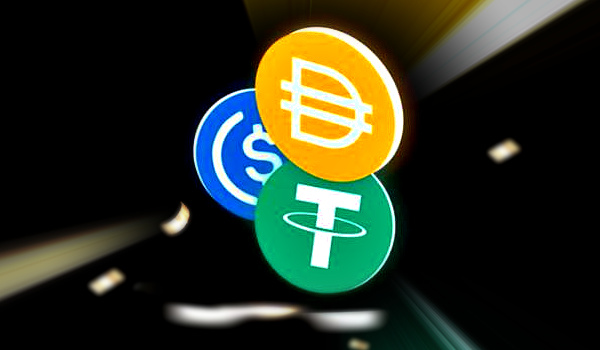Haven’t heard of (or cared about) a stablecoin until recently? Or maybe the name sounds familiar but never paid much attention to it? Well recently there was a total collapse of a popular stablecoin that wiped out $18B (yes, billion) of investor money in, like, two days. Swift and brutal. So what the hell is a stablecoin and how could something like that happen?
Think of a stablecoin as just a plain old money market fund with a ‘cool’ new name. Both are vehicles to hold cash when you don’t want to be in other types of investments or bank savings accounts. Typically they will yield higher rates of interest depending on their underlying holdings.
Compare the two definitions of a money market fund and a stablecoin from Wikipedia:
“A money market fund is a kind of mutual fund that invests in highly liquid, near-term instruments. These instruments include cash, cash equivalent securities, and high-credit-rating, debt-based securities with a short-term maturity (such as U.S. Treasuries).”
“Stablecoins are cryptos that are tied to a reserve asset such as a currency (like the dollar or euro) or a commodity (like gold, oil or real estate). Backing by other assets makes the value of stablecoins less prone to roller-coaster changes in price, hence the name.”
Note the difference in the underlying holdings. That’s where the allure of higher yields catch investor’s eyes. Obviously stablecoins will offer juicier yields IF the risks of holding those riskier assets can be mitigated. What kind of yields? Oh 9% up to 20% (or more), certainly no match for those old money market rates. Of course there is this pesky little thing we call RISK.
Common sense (remember that?) will tell you that ‘pegging’ a fund holding short term treasuries, cash and high rated instruments to a $1.00 price is a heck-of-a-lot easier that ‘pegging’ a stablecoin’s holdings of frisky commodities and other cryptos to the same $1.00 price. But hey, it’s 9% right? But wait, what if I could get 20%? What could possibly go wrong?
Well sure enough, something did go wrong. A young South Korean “genius” came up with the idea of getting rid of those pesky underlying holdings (too hard to hold real assets) and let an algorithm take over. So, follow me here…..he developed a ‘stablecoin’ dubbed TerraUSD that would be pegged to a $1.00 price. He also created a “side coin” dubbed Luna that basically functioned as a market maker (liquidity provider) for TerraUSD. The “idea” was to let the algorithm keep TerraUSD priced at $1.00, but if it slipped below Luna traders would step in to support Terra and get it back to $1.00. The 20% returns came in the form of arbitrage. Easy right?
So the South Korean “genius” created a sort of (kind of) crypto bank called Anchor Protocol that paid depositors 20%, invested the money in the “non-asset holding algorithmic” stablecoin (TerraUSD) which if it dropped below the magic $1.00 would be supported by the “side coin” Luna. Got it? Well a lot of people seemed to get it (??).
Problem; What if TerraUSD DID slip below $1.00 and the Luna support traders didn’t show up? Answer; that DID happen and TerraUSD went from $1.00 to zero wiping out $18B (billion). What could possible go wrong? Just that!
All stablecoins are not bad, or as risky as TerraUSD, depending on their underlying holdings. Certainly any investment that purports to offer 20% yields (while holding no assets) should be considered………..lets just say EXTRA RISKY. Remember the old saying, “If it sounds to good to be true, it’s probably not true.”
Just like any other investment, all stablecoins are NOT created equally.







